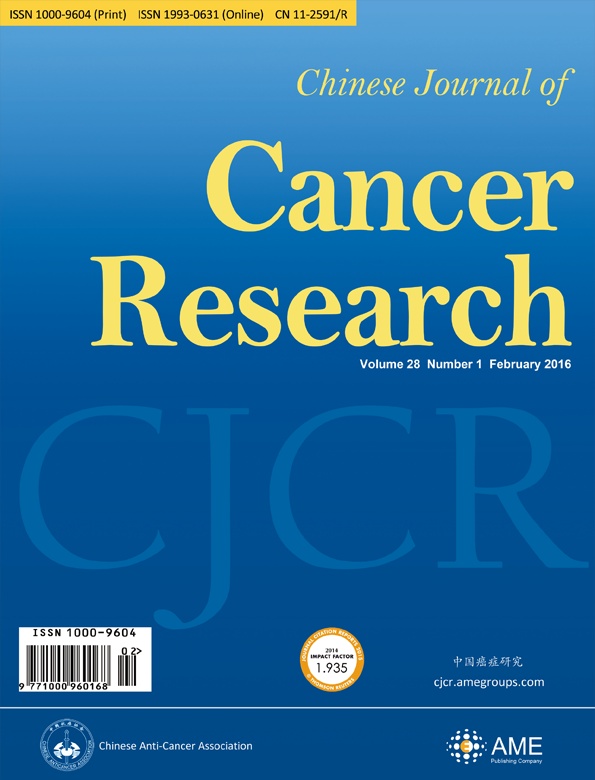中国年轻癌症的变化模式和生存率的提高与SEER数据库,1999-2017
IF 7
2区 医学
Q1 ONCOLOGY
引用次数: 16
摘要
目的年轻女性乳腺癌通常被认为更具侵袭性,需要积极的治疗。我们调查了早期发现和改进的治疗是否随着时间的推移改变了年轻乳腺癌患者的特征、管理和预后模式。方法选取1999 - 2017年和1999 - 2015年期间在复旦大学上海肿瘤中心(FUSCC)和基于人群的监测、流行病学和最终结果(SEER)登记处诊断为乳腺癌的40岁以下女性。收集临床病理特征及治疗资料。2013年之前确诊的患者进行随访。结果在FUSCC组和SEER组中,年轻乳腺癌患者的比例分别为15.0%和5.3%。在FUSCC队列中,导管原位癌(DCIS)的比例显著增加(从8.8%增加到16.9%;P<0.0001),在SEER队列中保持稳定。在FUSCC队列中,t1期肿瘤的比例显著增加(从35.3%增加到41.9%;P=0.008),而SEER组则有所下降(从42.4%降至33.0%;P < 0.0001)。在两个队列中,浸润性导管癌(IDC)和DCIS患者中雌激素受体(ER)阳性癌症的百分比持续增加。在FUSCC队列中,保乳手术和乳房切除术后立即植入物重建的使用都随着时间的推移而增加。在最近一段时间内,FUSCC和SEER组的预后都明显更好。结论随着年轻患者早期和er阳性疾病的增加以及更好的系统治疗策略,近年来生存率有所提高。年轻乳腺癌患者的手术治疗已经大幅减少。本文章由计算机程序翻译,如有差异,请以英文原文为准。
Changing patterns and survival improvements of young breast cancer in China and SEER database, 1999−2017
Objective Breast cancer in young females was usually considered more aggressive and requires aggressive therapy. We investigated whether early detection and improved treatments changed the patterns of characteristics, management and outcomes of young breast cancer patients over time. Methods Females under 40 years of age diagnosed with breast cancer during the periods 1999−2017 and 1999−2015 were identified in the Fudan University Shanghai Cancer Center (FUSCC) and the population-based Surveillance, Epidemiology, and End Results (SEER) registry, respectively. Clinicopathologic characteristics and treatment information were collected. Patients diagnosed before 2013 were followed up. Results The proportions of young breast cancer patients were 15.0% and 5.3% in the FUSCC and SEER cohorts, respectively. In the FUSCC cohort, there was a significant increase in the proportion of ductal carcinoma in situ (DCIS) (from 8.8% to 16.9%; P<0.0001) and it remained stable in SEER cohort. The proportion of T1-stage tumors increased dramatically in the FUSCC cohort (from 35.3% to 41.9%; P=0.008), whereas it decreased in SEER cohort (from 42.4% to 33.0%; P<0.0001). The percentage of estrogen receptor (ER)-positive cancers was consistently increased in both the invasive ductal carcinoma (IDC) and DCIS patients in the two cohorts. Breast-conserving surgery and immediate implant reconstruction after mastectomy both exhibited increased use over time in the FUSCC cohort. Both the FUSCC and SEER cohorts showed a significantly better prognosis in the recent time period. Conclusions With the increased early-stage and ER-positive diseases in young patients as well as better systemic treatment strategies, improved survival has been observed in recent years. There has been a substantial de-escalation in surgical therapies in young breast cancer patients.
求助全文
通过发布文献求助,成功后即可免费获取论文全文。
去求助
来源期刊
自引率
9.80%
发文量
1726
审稿时长
4.5 months
期刊介绍:
Chinese Journal of Cancer Research (CJCR; Print ISSN: 1000-9604; Online ISSN:1993-0631) is published by AME Publishing Company in association with Chinese Anti-Cancer Association.It was launched in March 1995 as a quarterly publication and is now published bi-monthly since February 2013.
CJCR is published bi-monthly in English, and is an international journal devoted to the life sciences and medical sciences. It publishes peer-reviewed original articles of basic investigations and clinical observations, reviews and brief communications providing a forum for the recent experimental and clinical advances in cancer research. This journal is indexed in Science Citation Index Expanded (SCIE), PubMed/PubMed Central (PMC), Scopus, SciSearch, Chemistry Abstracts (CA), the Excerpta Medica/EMBASE, Chinainfo, CNKI, CSCI, etc.

 求助内容:
求助内容: 应助结果提醒方式:
应助结果提醒方式:


